You might not realize it, but Colorado is home to one of the most diverse mycological habitats in the world. Particularly in the state’s high-elevation mountain regions, you’ll find everything from choice edible varieties of some of the tastiest mushrooms in the world, to species that can easily kill or maim you for life if ingested.
It should go without saying, but it is an incredibly bad idea to harvest and eat mushrooms in Colorado, or anywhere else, without knowing exactly what you’re doing. But for those with reliable knowledge and experience foraging mushrooms, Colorado offers edible varieties that are highly sought after by everyone from home chefs to high-end restaurants.
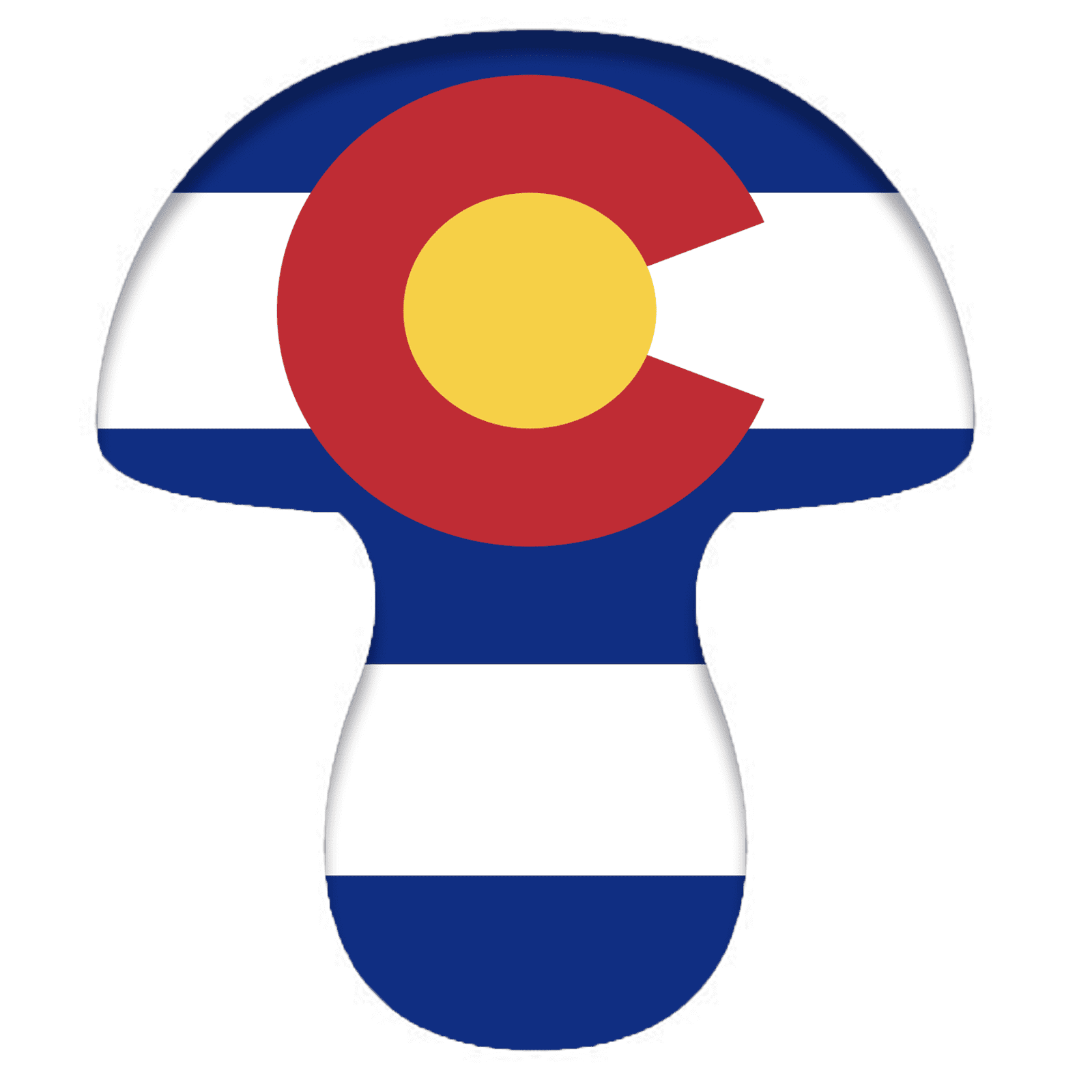
Colorado hosts the second-largest mycological habitat in the nation and is home to between 2,000 and 3,000 species of mushrooms. The article features an interview with mycologist Paul Stamets, who believes European countries known for their mycological offerings, like France and Italy, host a mere fraction of the mushrooms that Colorado does.
With so many mushroom varieties to be found in Colorado, there’s no way to list them all here. Instead, you’ll have to settle for learning about some of the state’s more notable shrooms.
Here are some of the wild mushrooms in Colorado, in no particular order:
Ganoderma Applanatum (artist conk)
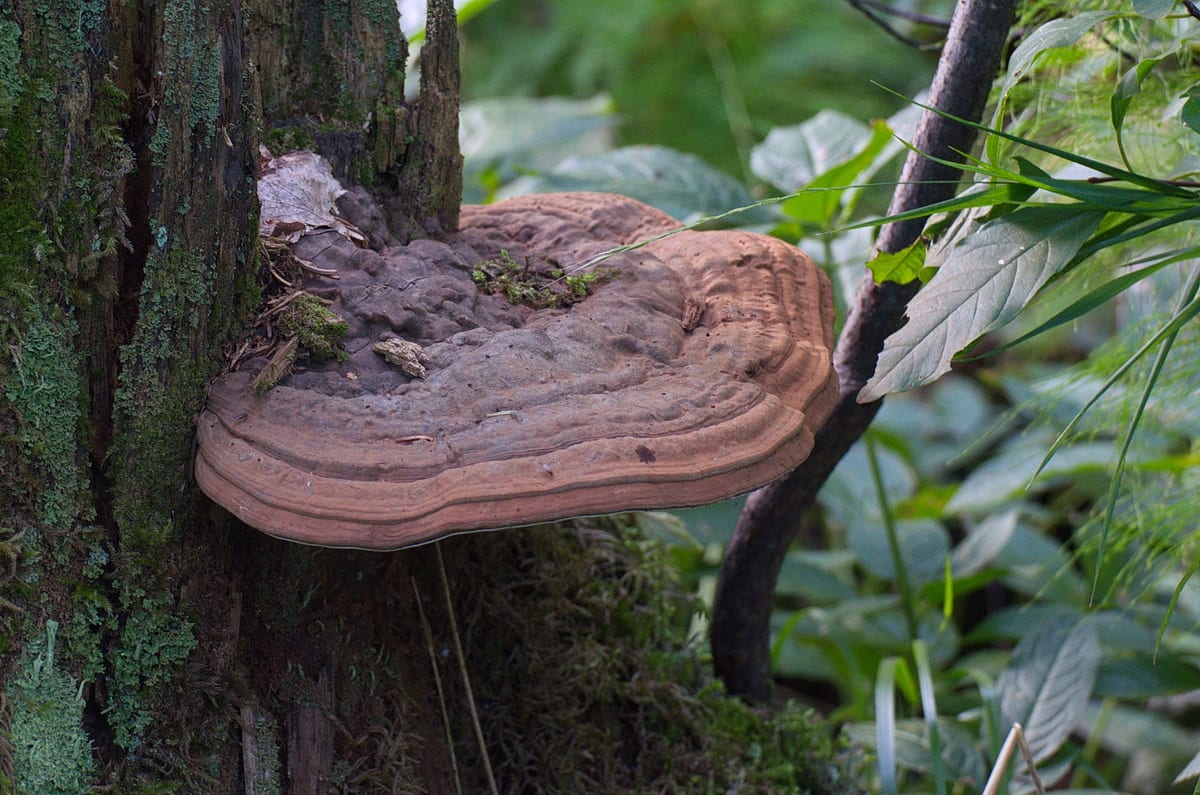
This otherworldly fungus looks nothing like the conventional mushrooms you’d find in your local grocery store. Instead, the artist’s conk fungus takes the appearance of strange, rounded shelves that grow straight out of the bodies of trees. It can live in living and dead trees, but you should be worried if you catch it living on a tree you care about, because it causes wood decay.
The artist conk fungus is hard, inedible, and can reach sizes of up to 39 inches in diameter.
Sarcodon Imbricatus (hawk’s wing)
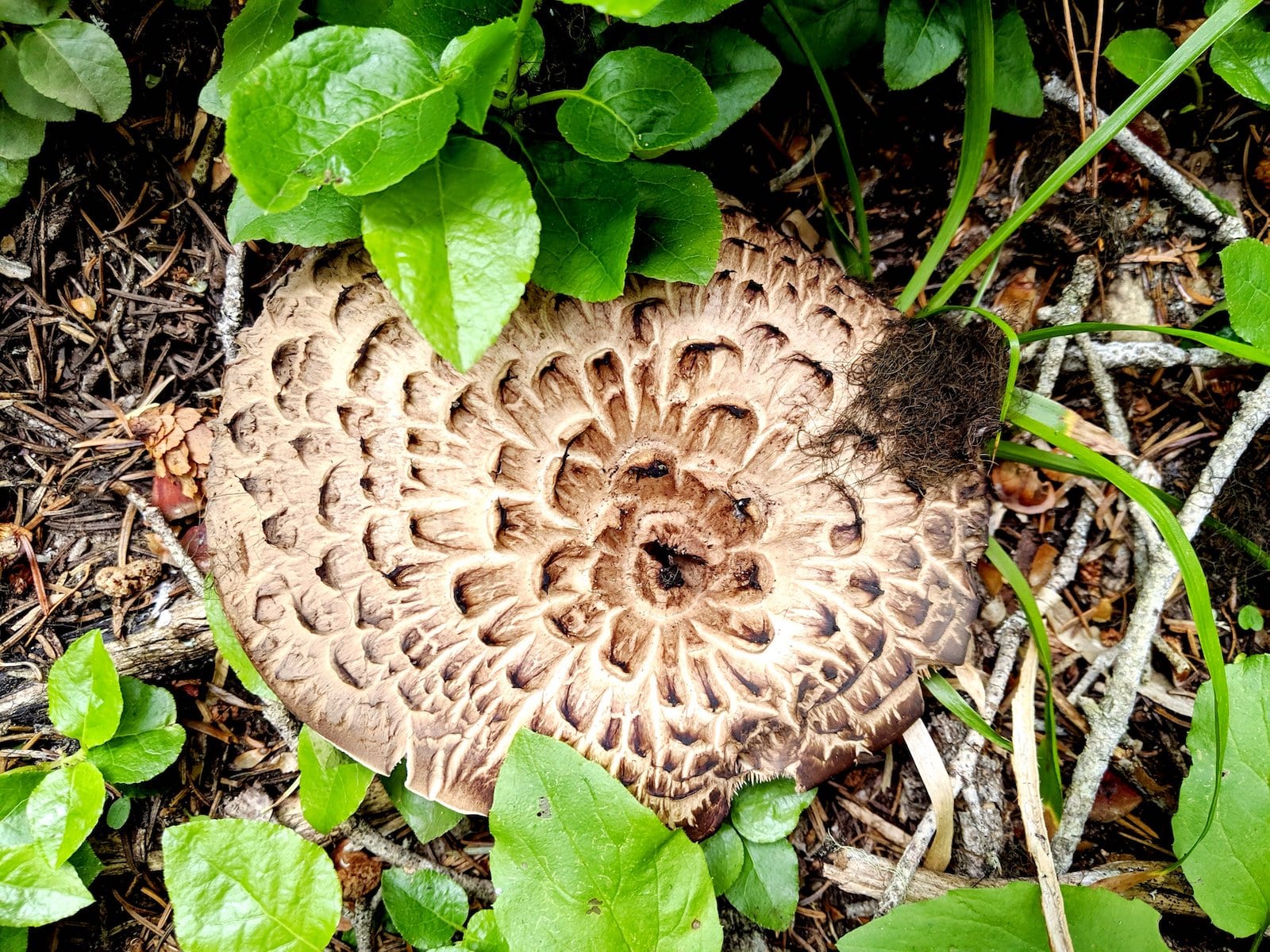
Colorado mushroom lovers favor this variety for a few reasons. First, it does look like a hawk’s wing, which is neat. Then there’s the mushroom’s easily identifiable nature, which makes it a great starter mushroom for beginner enthusiasts. And due to its strange appearance, it’s far safer than others to eat because it’s not easily mistaken for anything poisonous.
Most Colorado mushroom hunters are on the prowl for mycological stars like morels and porcini, but hawk’s wings are delicious when harvested young, and many liken their taste to portobellos.
Destroying Angel
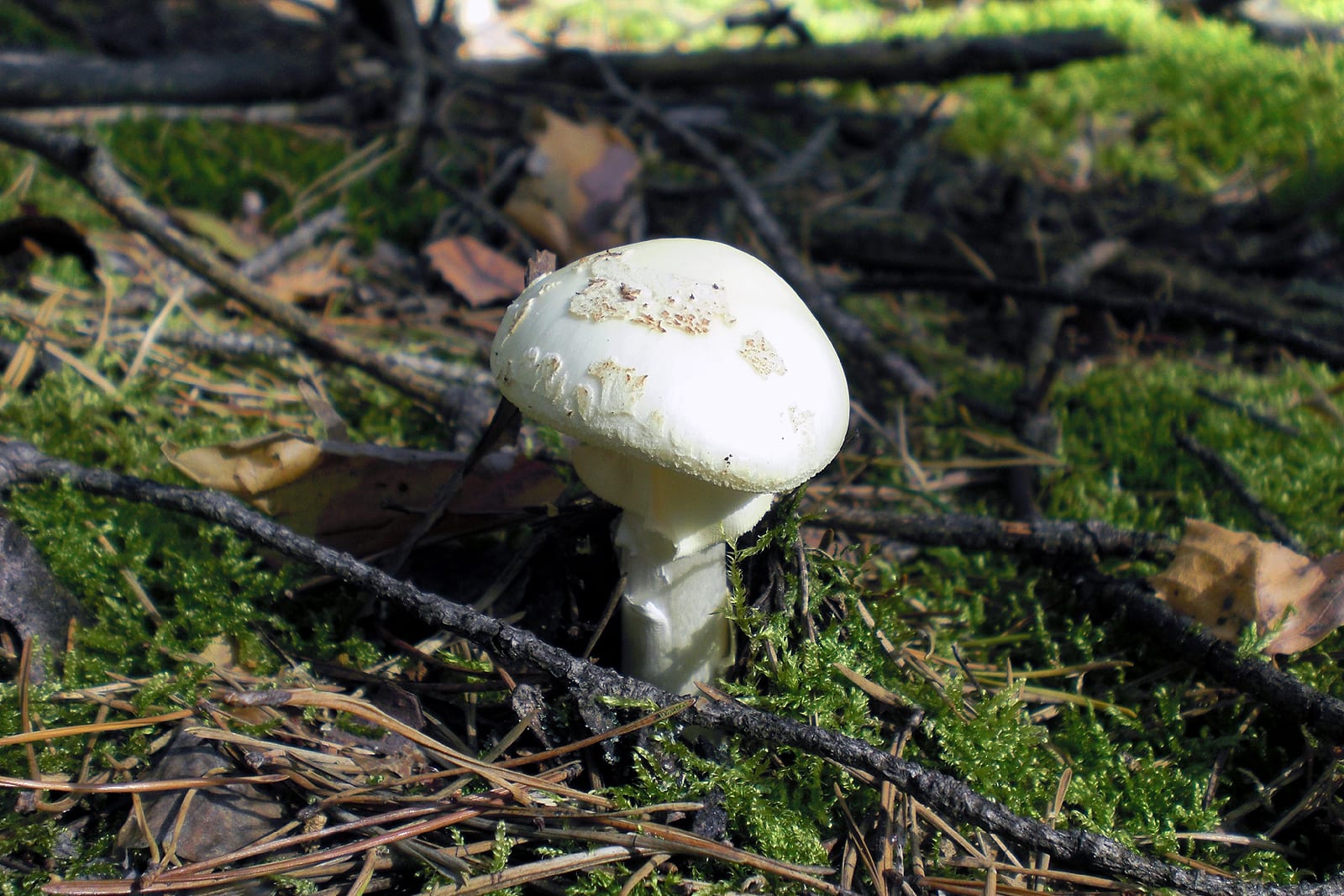
This aptly named mushroom is one of the most deadly mushrooms in the world, and, according to some, is responsible for the majority of mushroom poisoning deaths. True to its name, the destroying angel appears bright and pious during some stages of its life cycle, but can easily be confused for edible mushroom species, such as puffballs, during others.
The destroying angel moniker applies to multiple species of mushrooms that fall under the amanita genus, and you might encounter one of them in forested areas, lawns, and grassy meadows across Colorado.
Destroying angels produce lethal amatoxins, which cause severe, irreversible damage to the liver and kidneys if ingested. Symptoms like vomiting, cramps, delirium, convulsions, and diarrhea don’t occur until five to 24 hours after ingestion, which is often far too late a timeframe to treat and save some patients. The gorgeous and incredibly dangerous destroying angel is a reminder of why mushroom foraging should be left to those with experience and thorough knowledge.
Boletus Edulis (porcini)
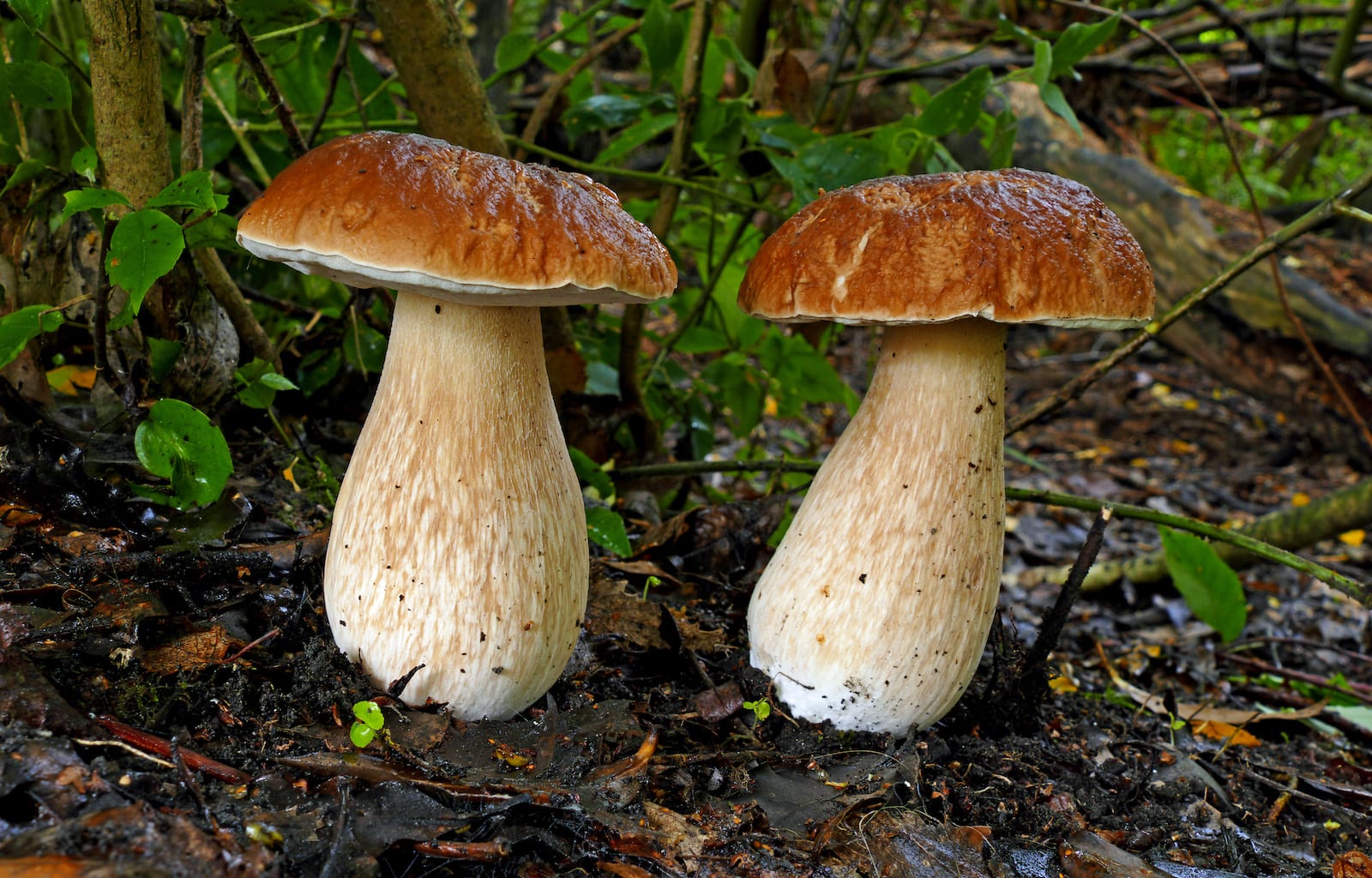
Due to its large size and great taste, this edible mushroom is one of the most commonly hunted species in Colorado, according to Coloradomushrooms.com. Colloquially referred to as porcini and king bolete, this large, easily identifiable mushroom pops up in the state between June and August and is most commonly found in high elevations along streams and under spruce trees.
These mushrooms are delicious fresh or dried, and are commonly enjoyed with dishes like risotto. Chefs look to the boletus edulis when they want to add strong, earthy, and meaty flavor profiles to their dishes.
Amanita Muscaria
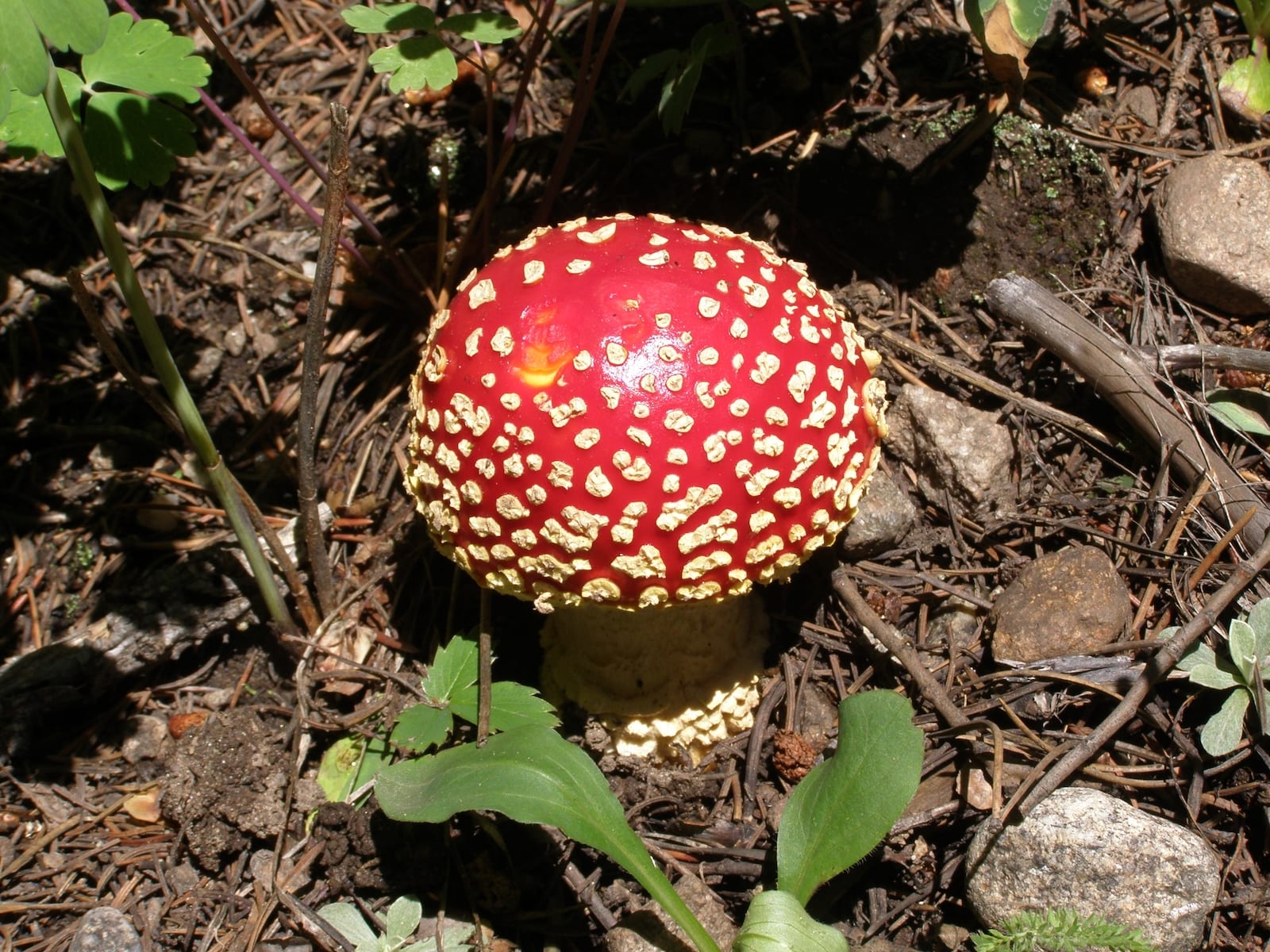
Most readers will recognize this mushroom from the Super Mario Bros. video game franchise, but its visibility in gaming culture is one of the least notable things about it. With a stunning red cap adorned with white spots, these charming mushrooms are hallucinogenic when ingested.
Mushrooms aren’t associated with winter holidays, but some historians believe the Amanita muscaria can be credited for constructing the surreal Christmas holiday mythology centered around Santa Claus. Long ago in the region today known as Finland, shamans are said to have practiced rituals where they ate and later transformed into these iconic red and white mushrooms, according to local folklore.
Symptoms from eating this mushroom include everything from deep relaxation to visual distortions to intense feelings of euphoria. In severe cases of poisoning, seizures and comas can occur. The Vikings are said to have consumed the Amanita muscaria to feel intoxicated, but eating this mushroom is warned against by experts. This mushroom species can be found at most elevations in Colorado’s forested areas, and it’s one of the only known hallucinogenic mushrooms in the state.
Morchella Esculenta (yellow morel)
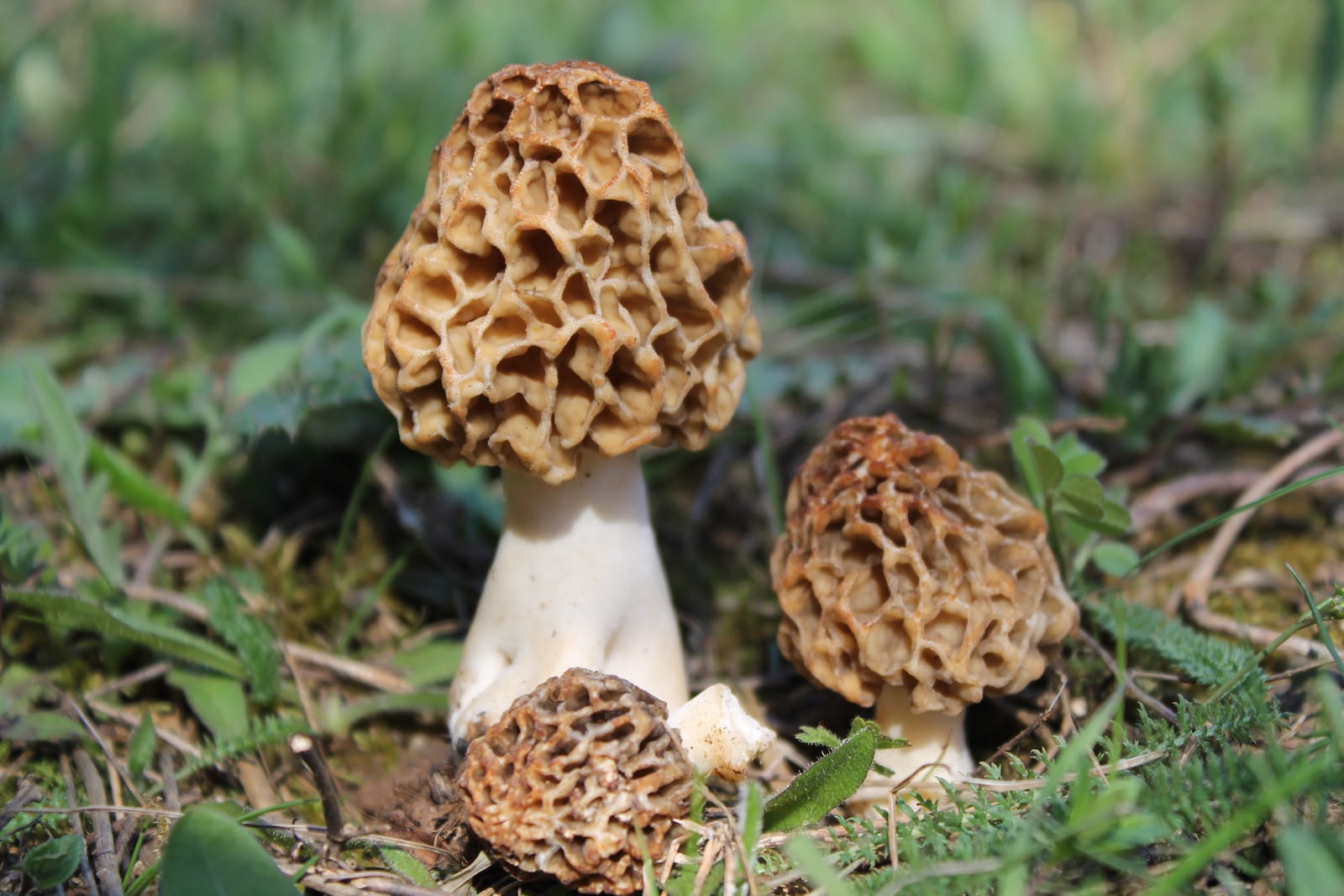
Yellow morels fall under the “choice” category of edibility, which means they’re considered to be among the most delicious mushrooms on the planet. Unfortunately, between this mushroom’s incredible taste and elusive nature, they’re not easy to find.
Many mushroom varieties are found in Colorado’s higher elevations, but morels grow at elevations of 8,000 feet and below and are most commonly spotted under cottonwood trees. Yellow morels are phenomenal on pizzas and in pasta, sautéed, or fried. French chefs have an acute affinity for these delicious, buttery mushrooms.
While the spongy yellow morel mushrooms may appear easy to identify, they’re often mistaken for false morels, which are deadly. If you have experience and know exactly what you’re looking for, search in foothills and plains locations that have recently experienced fires. Morels are more likely to grow in forested areas that recently experienced fire damage than ones that haven’t.
Hypomyces Lactifluorum (lobster mushroom)
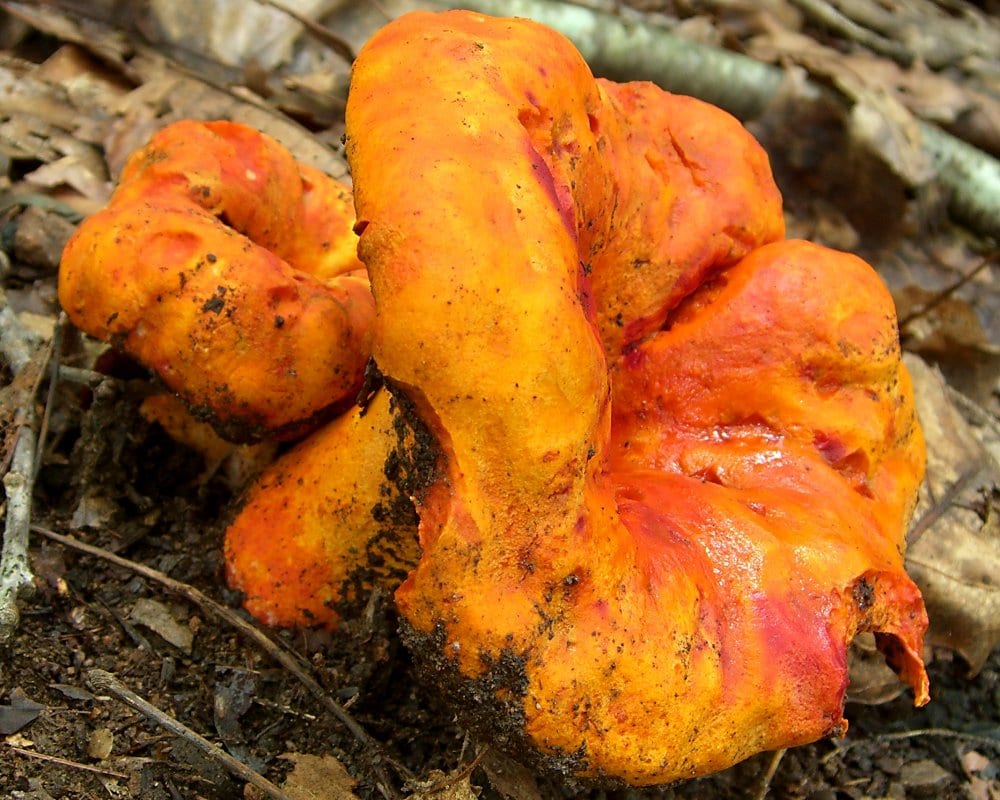
Commonly known as the lobster mushroom, these orange mushrooms are often found buried underneath the needles of ponderosa and lodgepole pine trees. While this species looks similar to chanterelles, they’re quite different. Lobster mushrooms make for tasty additions to soups and pasta, but are considered parasitic molds that feed on Russula and Lactarius species, and not mushrooms.
Aleuria Aurantia (orange peel)
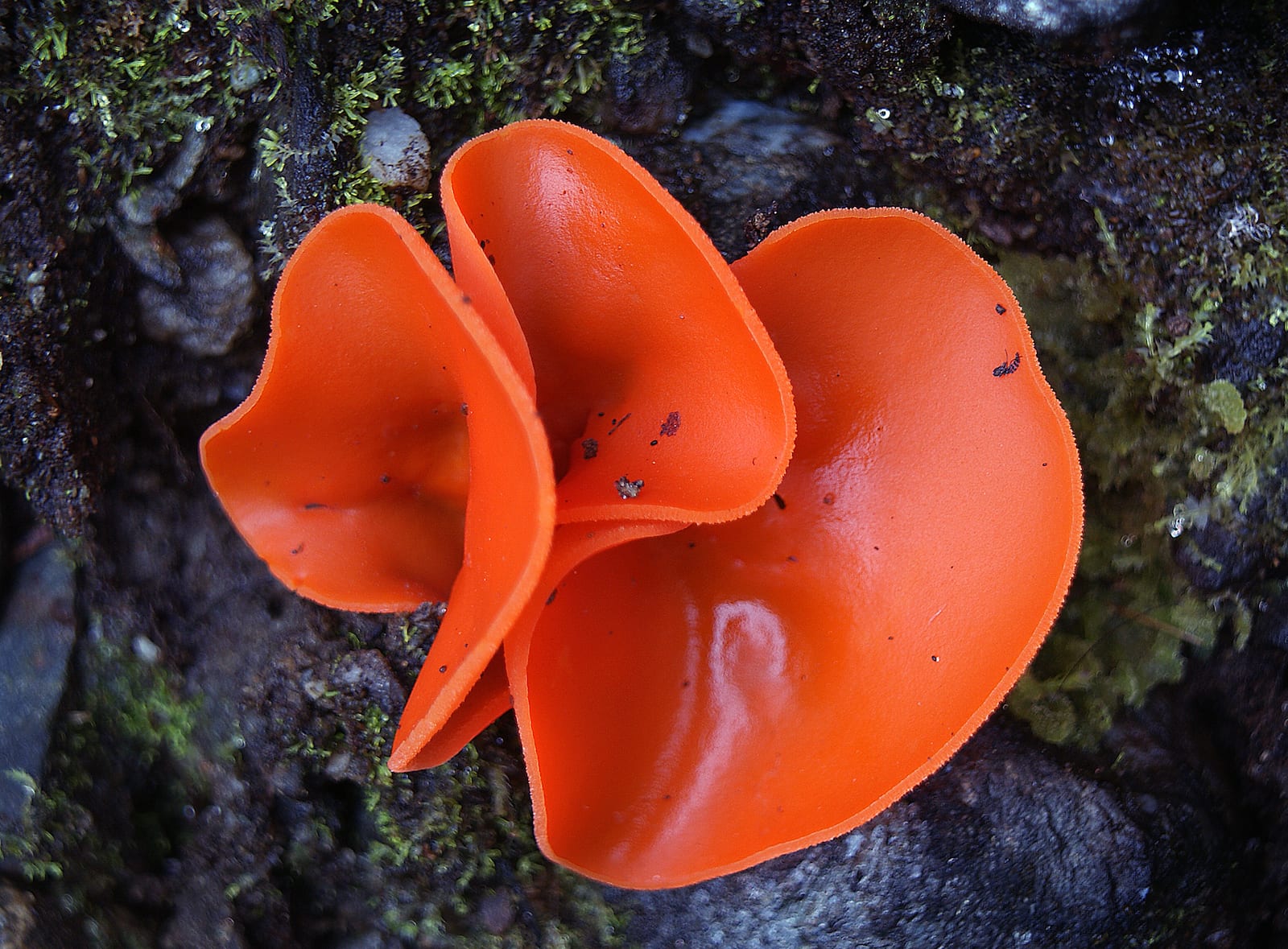
This fascinating fungus sports a distinct neon orange coloring that makes it easy to spot. Most mushroom hunters refer to Aleuria aurantia as orange peel fungus, which can be found across North America and Europe. According to the North American Audubon Mushroom Field Guide, orange peel fungus is technically edible, but it doesn’t have a distinct flavor. If you spot orange peel in Colorado and blow on it, the fungus will emit a small cloud of spores.
Lycoperdon Perlatum (common puffball)
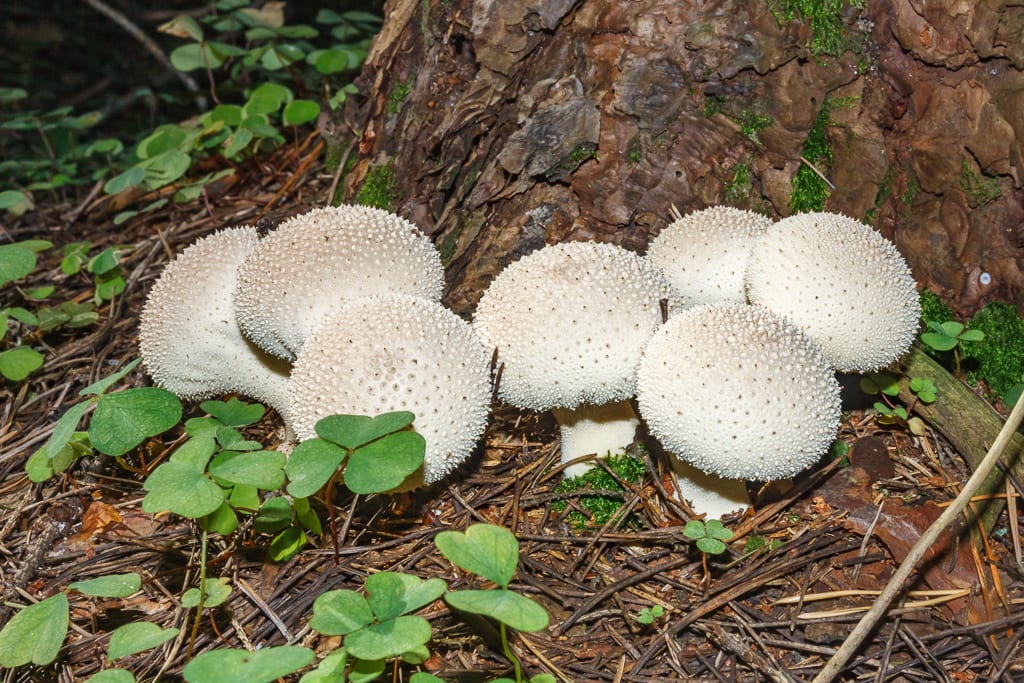
This Colorado mushroom wins the award for oddest nicknames, which include “wolf farts” and the “devil’s snuff-box,” among others. These small, round, and often studded mushrooms can be found in lawns and forests across the state and are edible at certain stages of their life cycles.
When experienced mushroom hunters look for safe edibility in common puffballs, they’ll cut them in half to make sure they’re white, firm, and without gills. Common puffballs are easily mistaken for inedible and poisonous varieties, such as immature forms of the Amanita muscaria.
Amanita Pantherina (the panther)
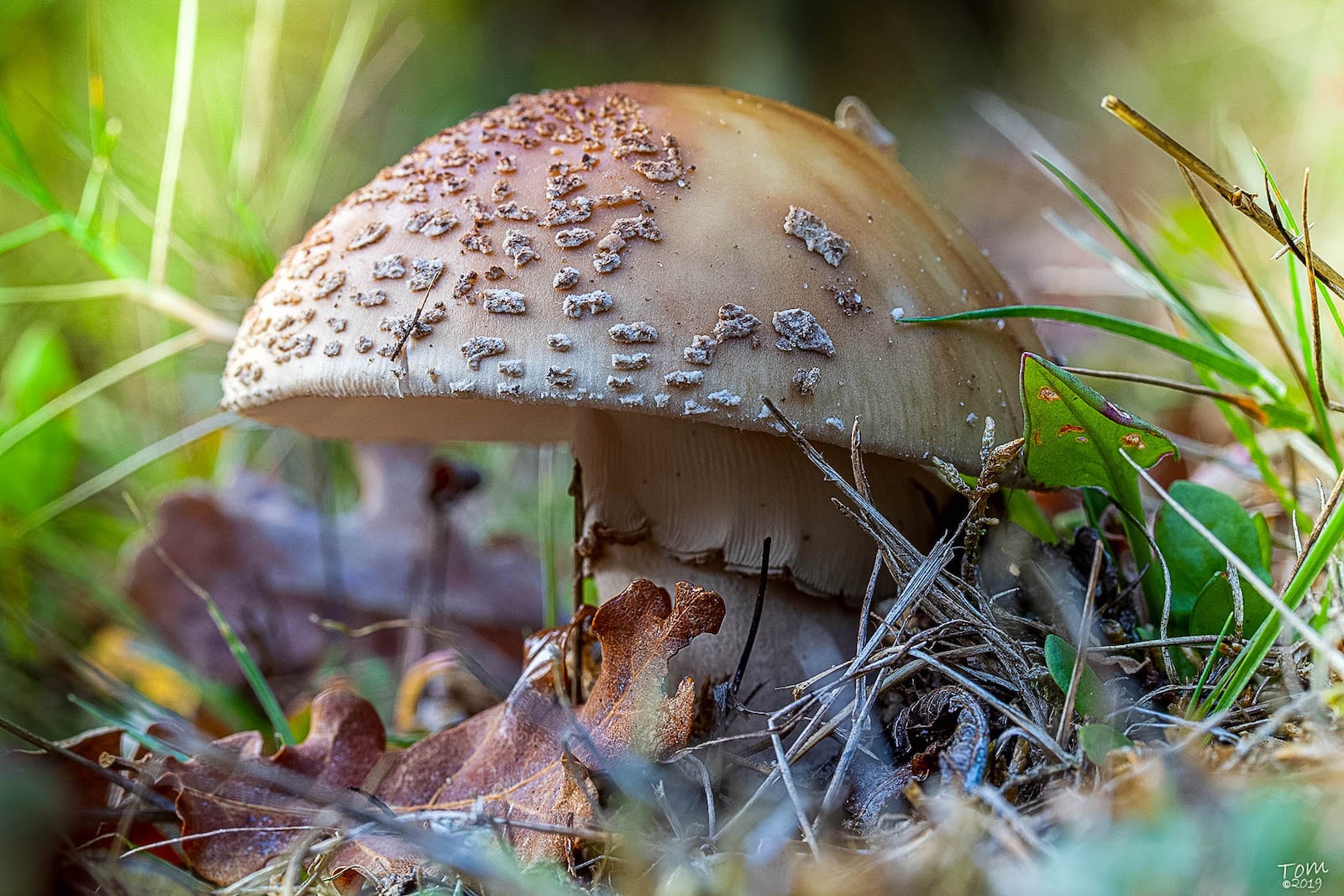
The panther boasts a cool name and the potential to alter the minds of those who eat it. It’s referred to as both panther cap and false blusher, the latter because it resembles the species, true blusher. However, experts warn never to ingest it, as many deadly varieties look strikingly similar to it. It’s a close relative of the Amanita muscaria and features the same toxins. In Colorado, it favors the foothills and sub-alpine areas.
Pleurotus Populinus (aspen oyster mushroom)
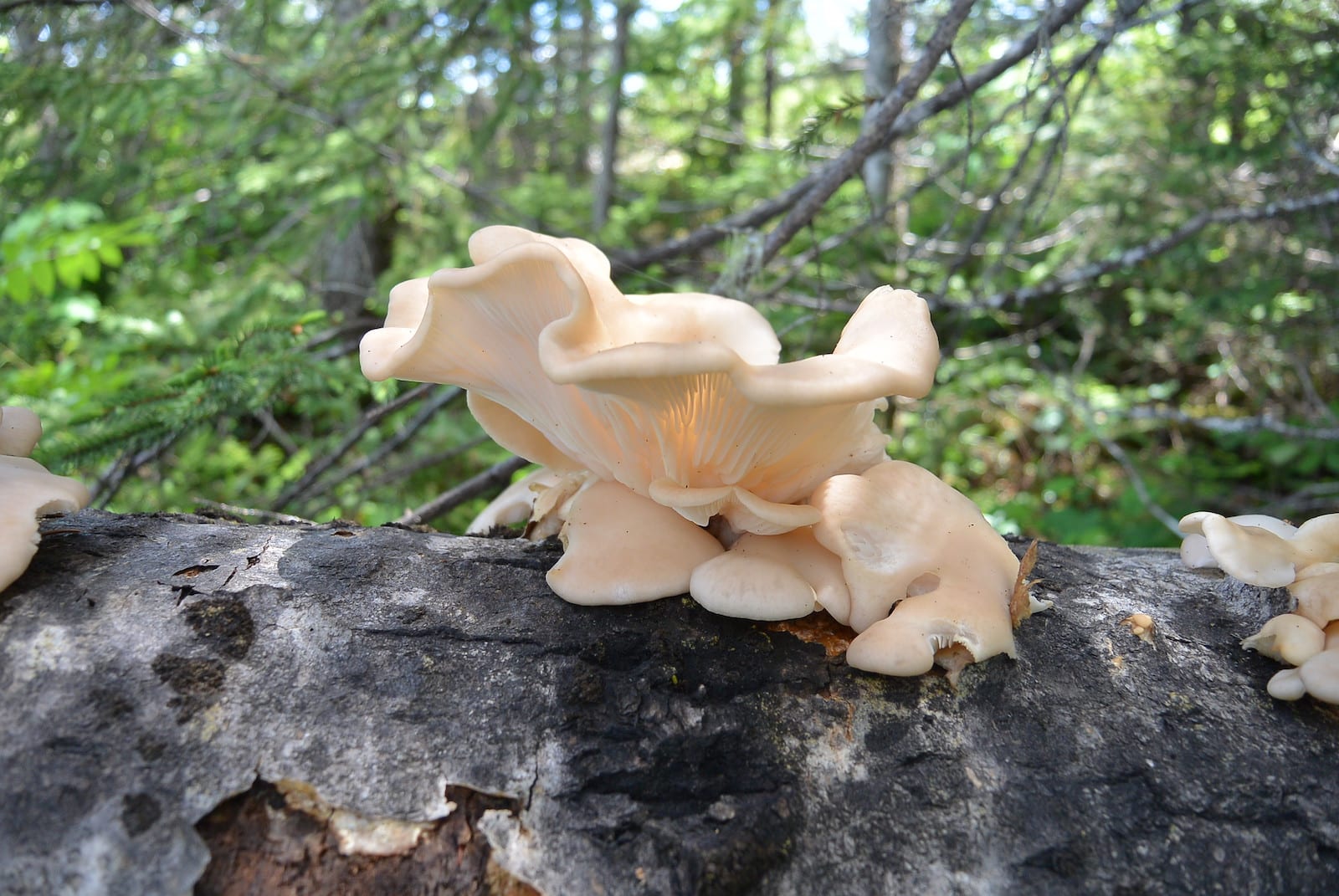
With an odor some compare to anise, aspen oyster mushrooms are white, tan, and brown, and grow in clusters in mountainous aspen groves. Aspen oysters are edible, but they have to be harvested fresh to be eaten. Many mushroom hunters consider this mushroom a choice edible when it’s harvested early in its life cycle, and this and other varieties of oyster mushrooms are thought of as one of the easiest to cultivate.
But if all that hasn’t sold you on this species of mushroom, the fact that they glow in the dark at night might just win you over.
Calvatia Booniana (giant western puffball)
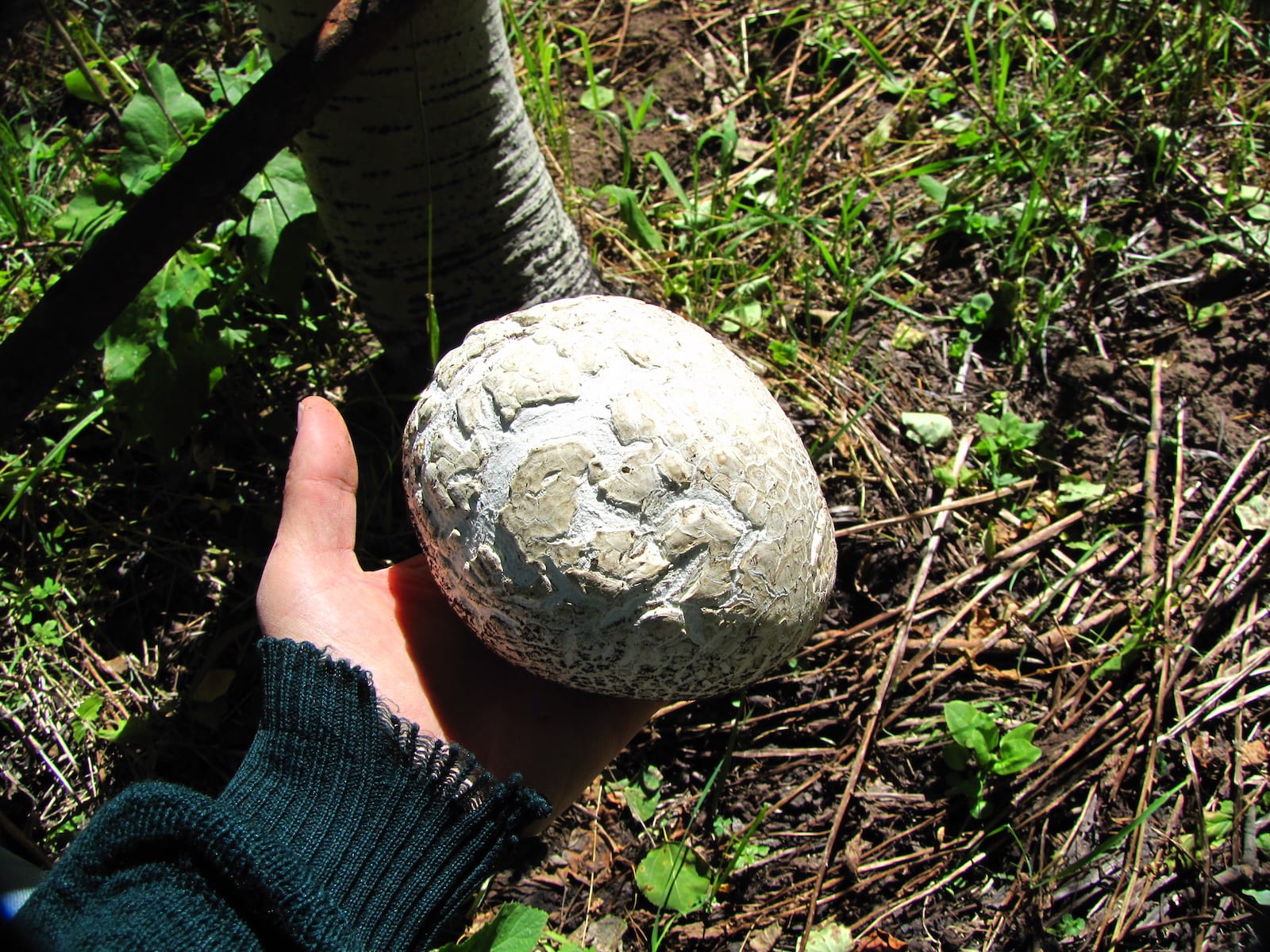
Giant western puffballs are exactly what they sound like—massive spheres of mushroomy goodness. With sizes of up to 28 inches in diameter, the giant western puffball favors meadows, fields, forests, and sunny areas. In Colorado, they’re most likely to puff up on the western slope of the Rockies. These delightful mushrooms are edible, and many liken their taste and texture to tofu. Peak edibility occurs when these mushrooms are firm and white on the inside.
Tasty and easy to spot, giant western puffballs are thought of as one of the best introductory mushrooms for those new to hunting mushrooms.
Parasola Plicatilis (Japanese umbrella)
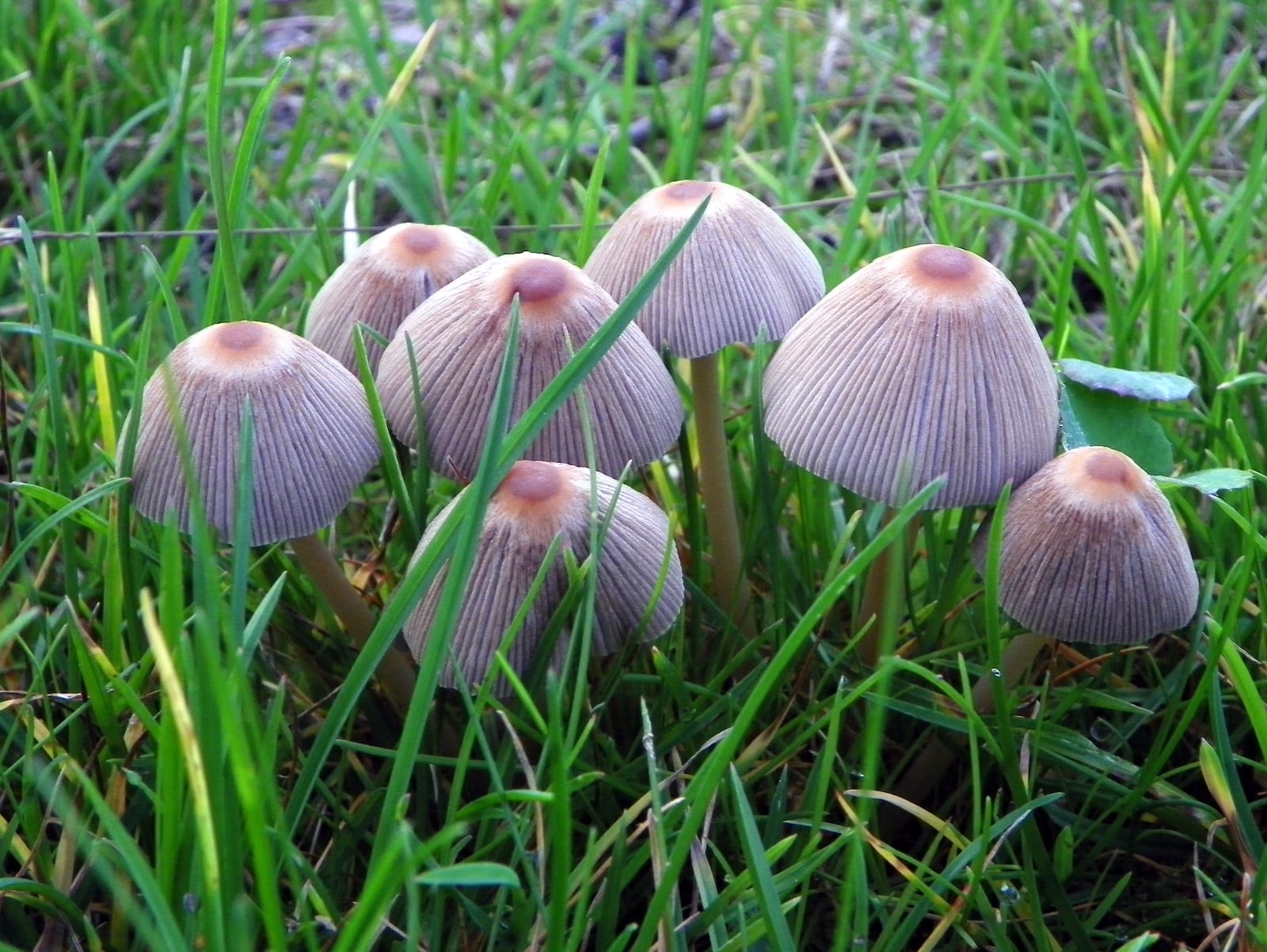
Named after decorative umbrellas found in Japan, these small, delicate mushrooms are members of the inkcap family of fungi. You’re most likely to spot these short-lived mushrooms the morning after a rainstorm on Colorado’s lawns and grassy areas. However, if you want to see them, you’ll need to act fast. Japanese umbrellas typically pop up, spread spores, die, and decay without a trace within 24 hours. They’re noted as inedible.
Marasmius Oreades (fairy ring)
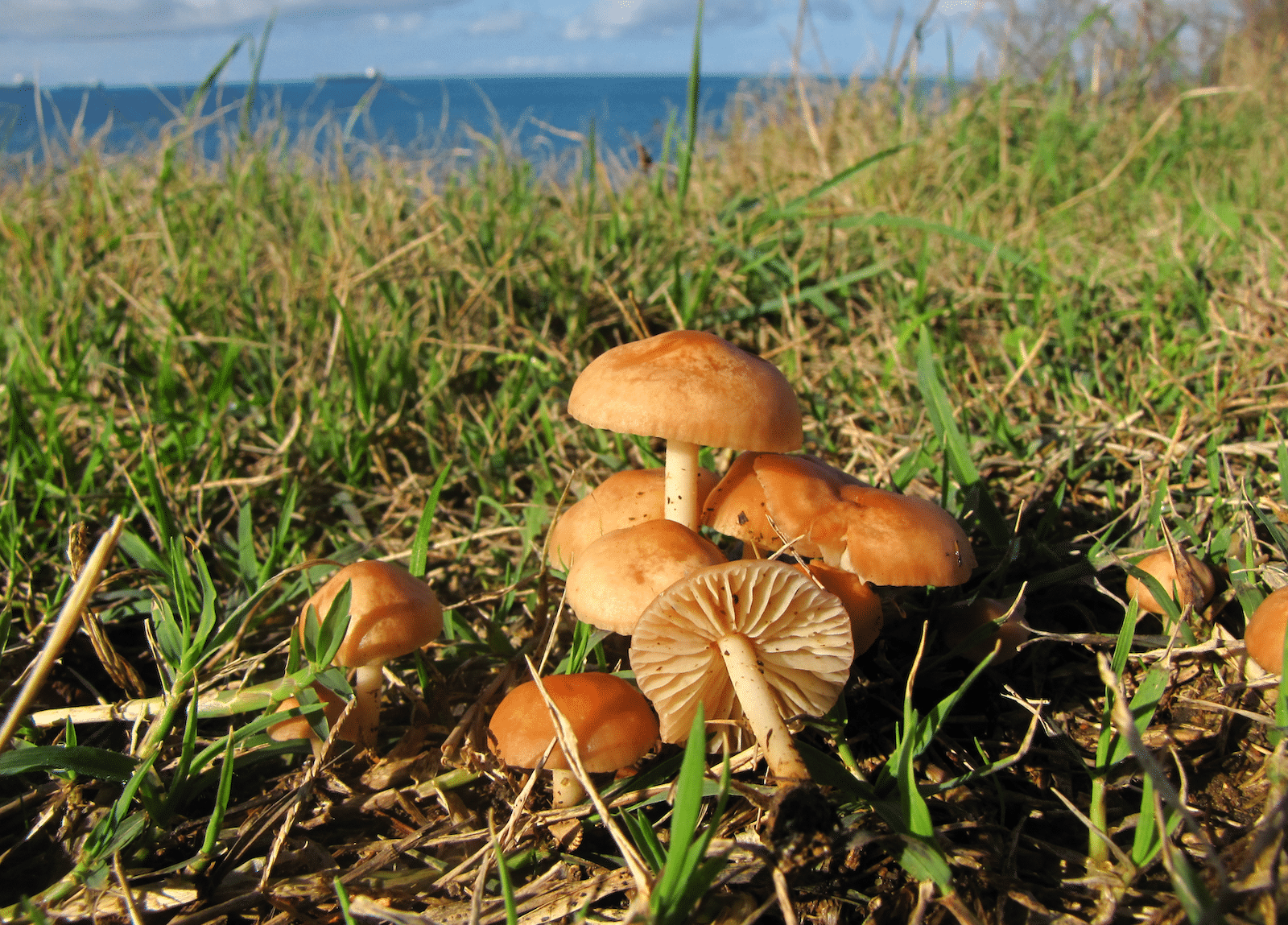
Also known as the Scotch bonnet, fairy ring mushrooms grow throughout the United States and can be found on Colorado’s fields, lawns, and open areas. Confusingly, these mushrooms don’t typically grow in “fairy ring” circles like other mushroom species are known for. Fairy ring mushrooms are edible and boast a sweet flavor profile that can be used in everything from baked goods to soups. However, these mushrooms are notoriously difficult to identify.
Cantharellus Cibarius (golden chanterelle)
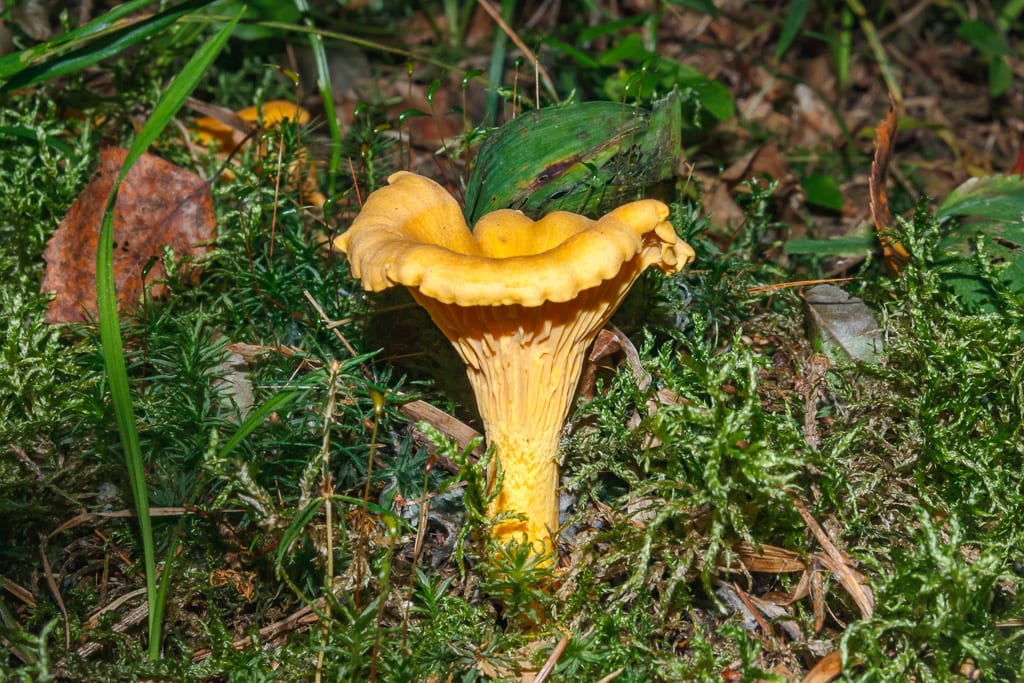
Golden chanterelles are among the tastiest and most hunted mushrooms in Colorado. They exude a fruity odor similar to apricots and are famously and frustratingly elusive. Some years, mushroom hunters can find them, but not others. When they’re lucky enough to get their hands on them, chefs feature these mushrooms in soups, rice, and pasta dishes, and as delectable sautéed sides alongside meat.
If you’re feeling lucky, your best shot at finding golden chanterelles in Colorado is by searching around flat areas of 7,000-11,000 feet near juniper bushes and aspen groves.
Lactarius Deliciosus (delicious milky cap)
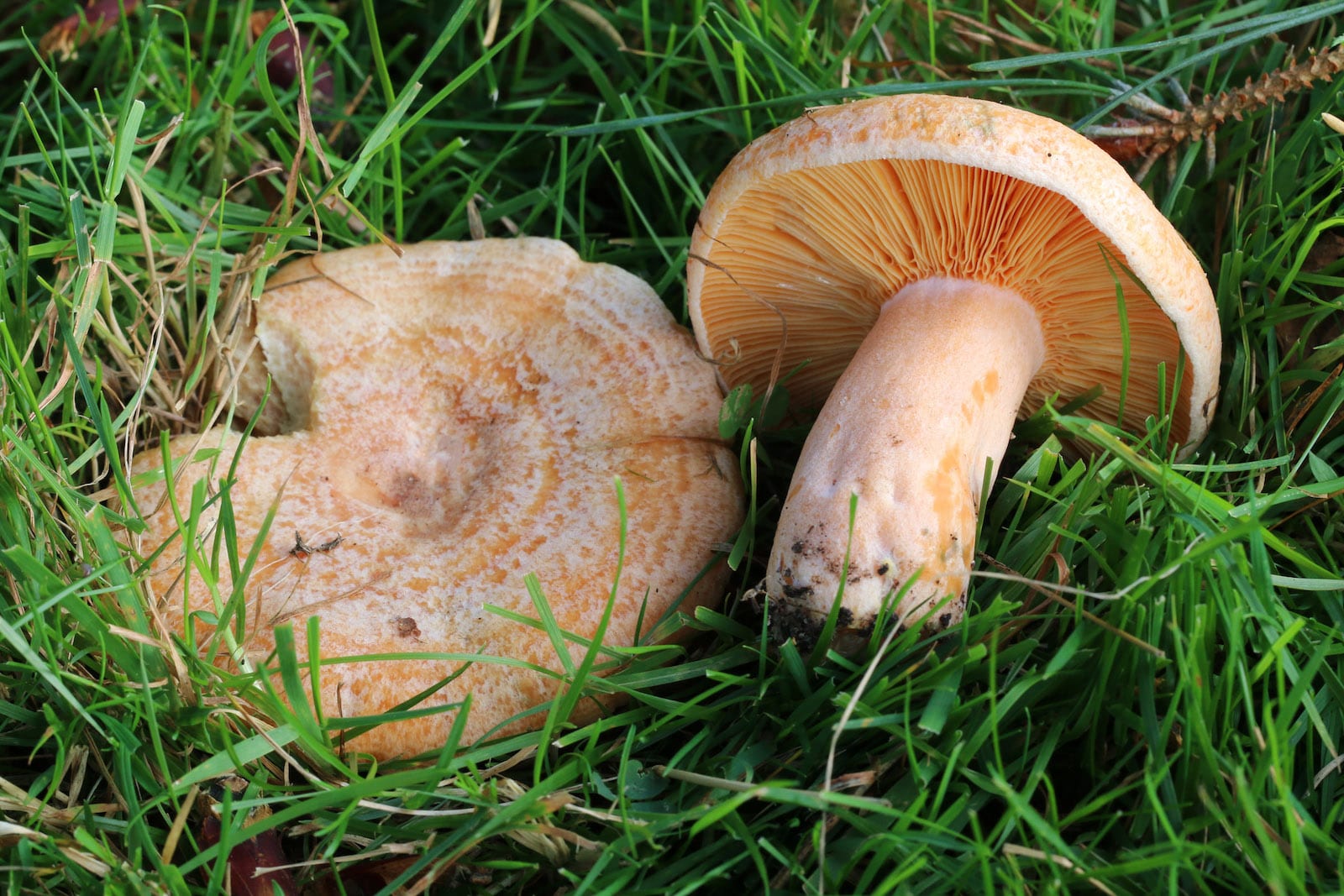
Many find these ugly Colorado mushrooms delicious, and they’re a prominent staple in Spanish cuisine. Also known as the saffron milk cap and red pine mushroom, delicious milky caps are orange and can be identified by their subtle blue and green markings. If you’re interested in spotting these in Colorado, set your sights on the ground of forested areas.
Russula Emetica (the sickener)

As you might’ve already guessed, this mushroom is poisonous, and you definitely shouldn’t eat it. But even with an ominous name like the sickener, many have and still do. The sickener won’t kill you, but will instead unleash all manner of nastiness on your digestive tract. For many years, it was widely eaten in Eastern Europe and Russia in pickled dishes and goulash. The sickener can be identified by its vivid red coloring.
Ustilago Maydis (corn smut)
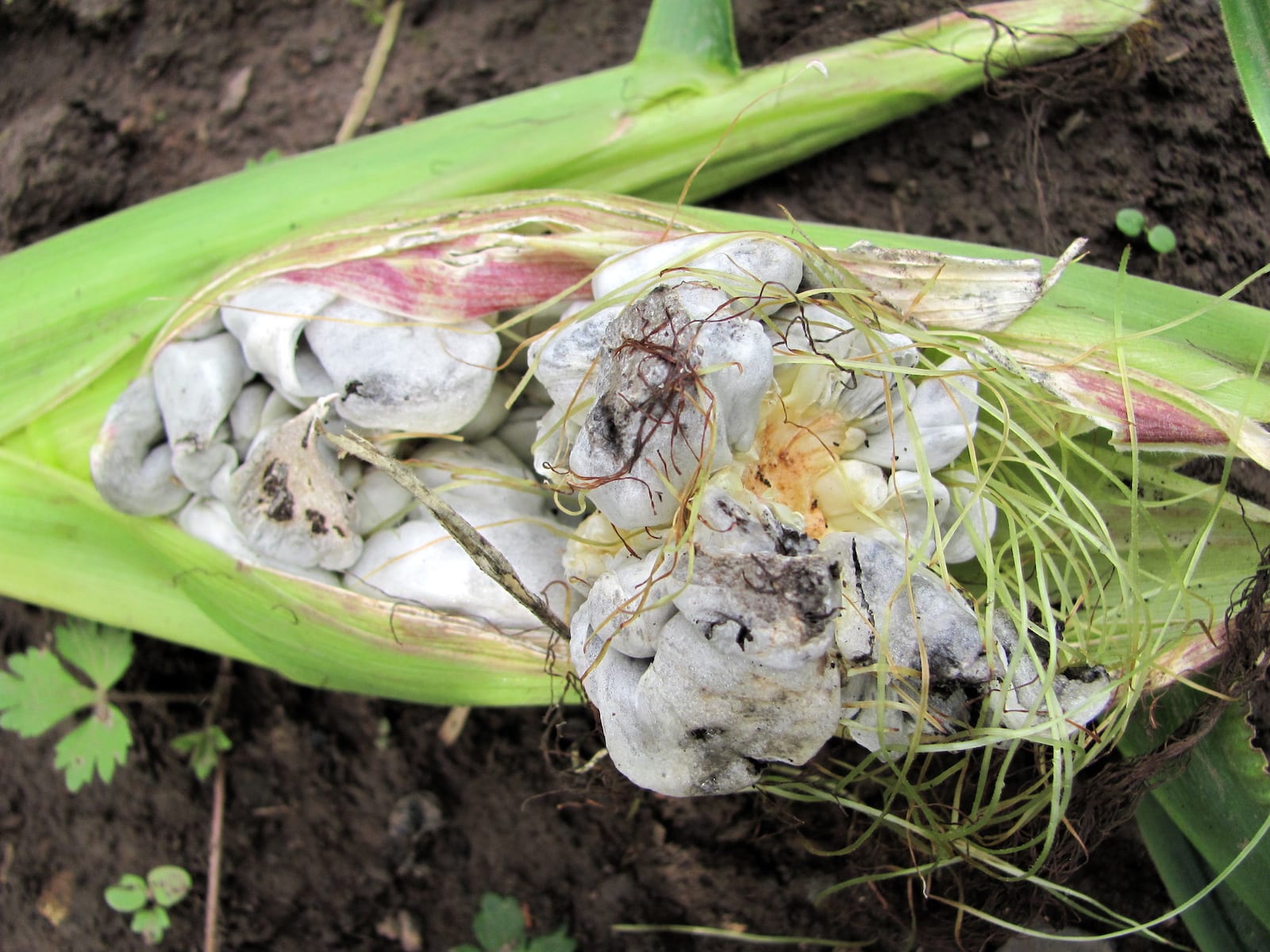
Also commonly known as corn fungus and huitlacoche, corn smut looks like something that would ruin a farmer’s day, but is considered a rare and delicious treat to many. Corn smut is a fungus that grows on the kernels of unharvested corn. It develops ominous-looking grey and black patches of mold that crop up and out of the sheaths of corn stalks.
It’s considered a delicacy in Mexico, where it’s used in soups and quesadillas as a filling. In terms of taste, corn smut is often compared to truffles. This phenomenon occurs in corn fields, which blanket Colorado’s eastern plains region.
Morchella Angusticeps (black morel)
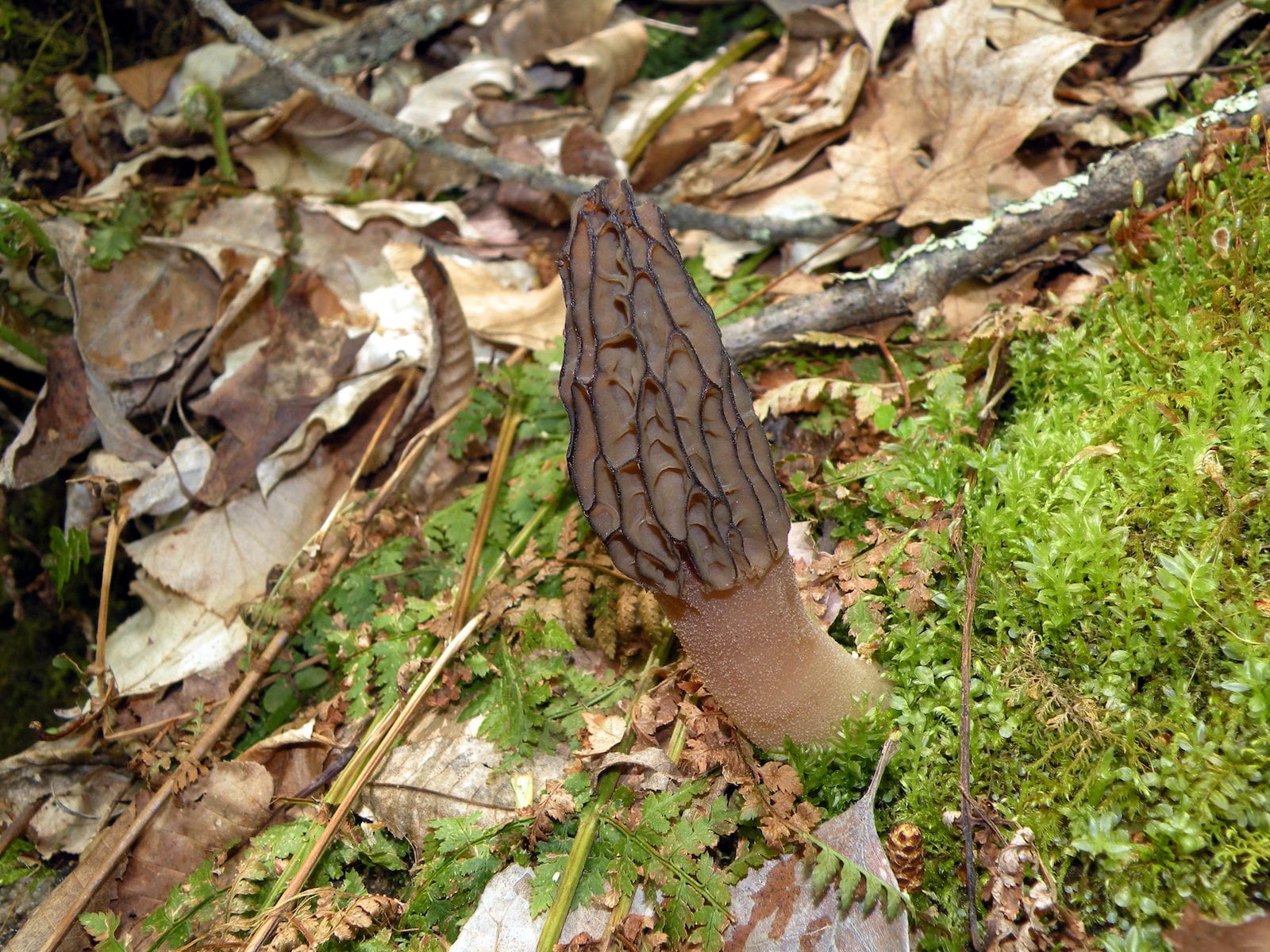
Black morels are generally thought of as some of the rarest and best-tasting mushrooms in Colorado. They’re found above elevations of 7,000 feet and favor burn areas, aspen groves, and the ground beneath conifer trees. With a color and shape that can be difficult to distinguish from pinecones, the elusive and highly coveted black morel is known to appear in Colorado between May and July.
That’s a roundup of some of the wild mushrooms found in Colorado. Remember not to attempt to forage and eat these wild-growing mushrooms unless you are certain you know what you’re doing.

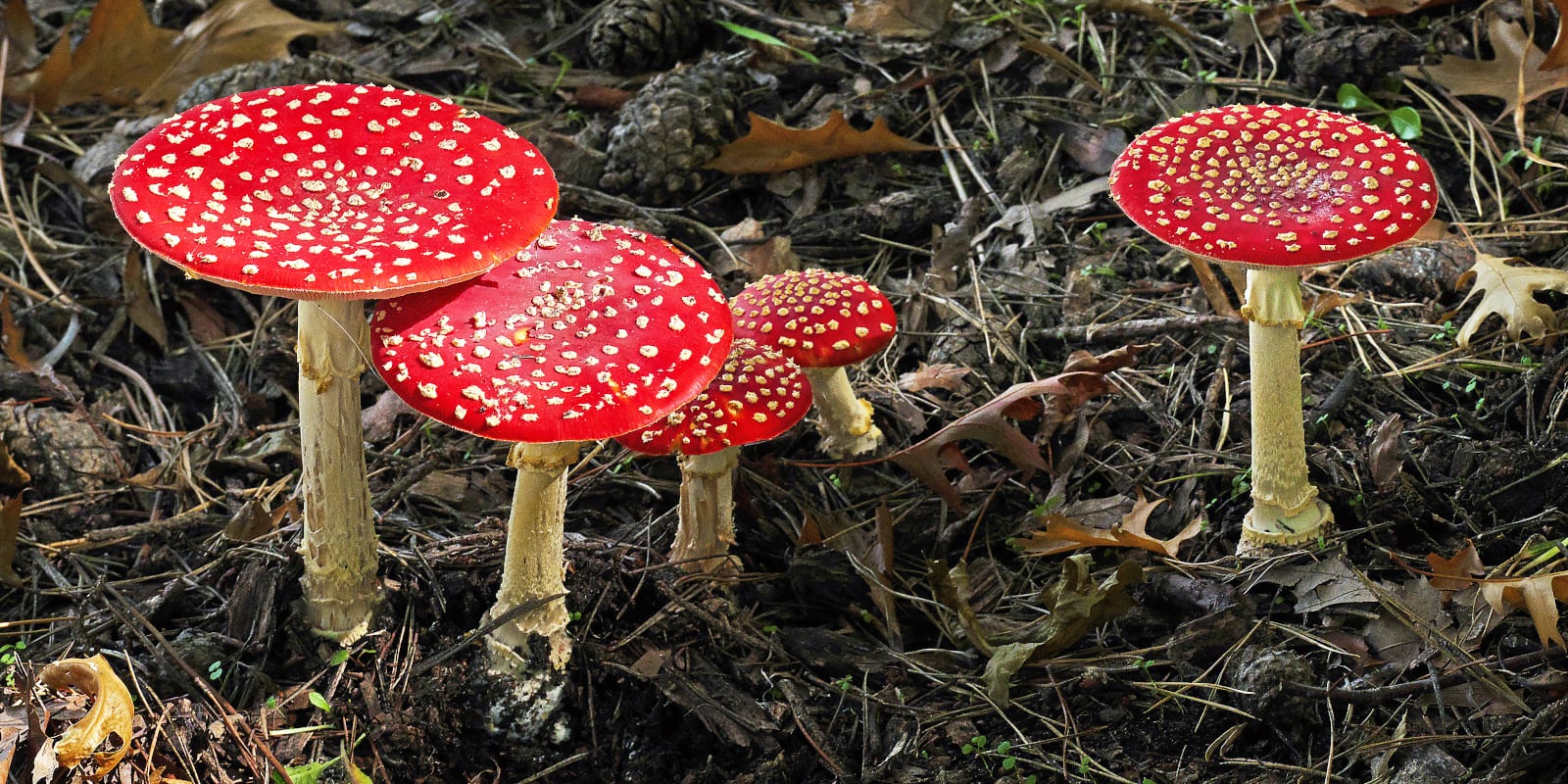
 10 Terrific Day Trips from Denver
10 Terrific Day Trips from Denver